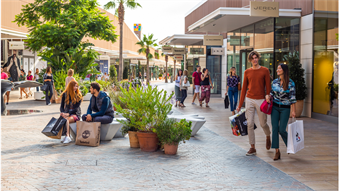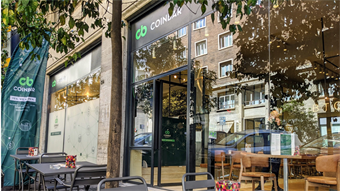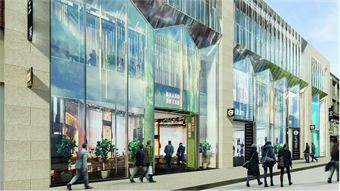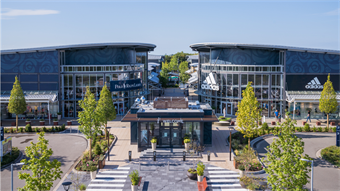Retail food and beverage sector grows up
- In Research Hub
- 10:05, 19 April 2017
- 4026 Views
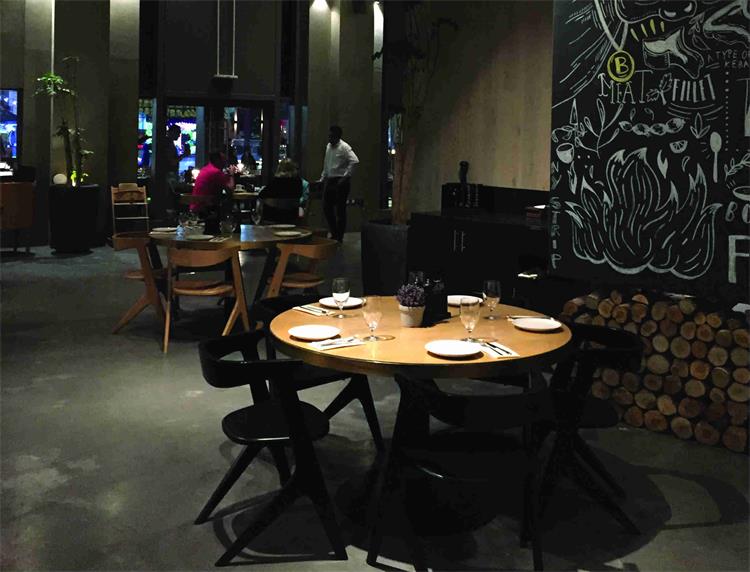
A new report from the International Council of Shopping Centers (ICSC) highlights the impact of consumer demand and the digital economy on retail and food.
The retail food and beverage (F&B) sector is growing up, but like a temperamental teenager, it’s going to
need greater understanding to achieve full maturity. According to ICSC’s latest report on F&B within the retail real estate sector, demographic change, digitisation, more demanding consumers and an economy increasingly oriented towards experience is having a huge impact on the retail and foodservice sectors globally.
Where F&B within a shopping centre once made up less (sometimes much less) than 10% of the retail area, now some centres are dedicating up to a fifth of their space to new food concepts.
As a result, F&B is growing in importance to retail real estate professionals as consumers expect to spend more time and money eating and drinking while shopping. This is an issue for some occupiers and investors, but any change that enhances choice, customer experience, efficiency and convenience must
be a good thing.
In the UK, Canada and US, the amount of space dedicated to F&B is forecast to reach up to 20% or more of total space in some of these regions by 2025 – and it could surpass 30% in Asia, says the report.
This huge expansion in space allocation comes with opportunities such as increased footfall and sales, but an oversupply of similar food operators is a risk.
The good news for asset managers is that the rental gap is closing between foodservice and traditional retail, and a shortening of lease lengths can benefit both operators and landlords. The landlord can replace poorly performing operators with fresh, new concepts, while the operators avoid committing to long lease agreements.
However, more foodservice space does not necessarily equate to success. The sector is going through a period of exciting and rapid growth, but this is unlikely to last forever, the ICSC report points out. Growth masks imperfections and it’s when the market turns that these imperfections are exposed and
amplified, and poorly conceived or executed foodservice strategies come to light.
Despite huge opportunity, the future for foodservice needs careful consideration; evolution and growth come with challenge and risk to restaurateurs and investors alike.
DIVERSITY ADDS EXCITEMENT
There is no ‘one size fits all’ when it comes to creating the right foodservice space and concept within a shopping centre, says the report. In-depth knowledge of customer base, catchment and competition are key.
Jonathan Doughty, head of EMEA foodservice consulting at JLL, agrees. ‘The guest doesn’t care whether a retail space has A1 or A3 planning usage, they just want to eat and shop,’ he says. ‘We have to create districts that offer a combination, and delight and start really thinking about how people spend their time, and we have to make the space as efficient and inventive as possible.’
Centres need to take a more strategic approach, matching the foodservice offer to the centre type and catchment, as well as investing in foodservice people, says ICSC. At the same time, to be a success, the foodservice offer should be seamlessly integrated within the broader leisure offer.
One major challenge for all shopping centre managers is the logistical impact that food operators
have on a centre. The main effects are increased demand for parking, accommodation and the longer hours needed for a thriving evening economy. On top of that are new issues around accommodating the proliferation of food delivery companies such as Just Eat, Deliveroo, Delivery Hero and Takeaway.com.
Investors in and valuers of shopping centres need to become foodservice and retail specialists, says ICSC. They need to truly understand the retail foodservice operators and their business models, in particular
how well the foodservice offer caters to a specific consumer base, the number of covers and how the seating arrangements work.
DISRUPTIVE POWER OF TECHNOLOGY
Technology has done much to improve operational efficiency and service. Via a smartphone app, foodservice operators are offering ‘hyper-personalised’ experiences through advanced analytics, virtual reality and robotics. The flip side of this is the logistical challenge of catering to consumer demand
through online delivery systems.
The main ‘tech risk’ for restaurants and their landlords is transparency, says ICSC. Will a consumer continue to patronise the café, restaurant or bar in a shopping centre, despite greater access to information through mobile technology?
WASTE NOT, WANT NOT, SAYS MINTEL
A Mintel report on food and drink highlights key trends we can expect from 2017. Continuing
from last year, consumers will continue to seek comfort from authentic tastes, flavours and formats, but this doesn’t eliminate the need for innovation, says the report.
Aspirations for a healthier and cleaner lifestyle continue, and there has been a huge increase in the number of vegetarian and vegan claims in global food and drink launches since 2010.
Sustainability is also increasingly important. The sheer amount of food and drink that is wasted around the world is propelling change across the industry. Consumer awareness of the issue of food waste is also
spreading because of efforts by retailers and restaurants to reduce or donate food and drink that is past the sell-by date, blemished or damaged. Restaurants in the Netherlands, Finland and the UK are using apps to sell food that would normally be thrown away at closing time.
STARBUCKS HEADS TO ITALY
Starbucks will be opening a new Roastery in Milan, its first in Italy. Set to open in late 2018, the Milan Reserve Roastery on Piazza Cordusio will be the first in the Europe, Middle East and Africa region and the fifth globally.
The 7,700 m2 retail space will feature the company’s premium, small-batch Reserve coffees served in a beautiful environment. Howard Schultz, Starbucks chairman and CEO, described the roastery as ‘the culmination of a great dream of mine, 34 years in the making, to return to Milan with one of the most immersive, magical retail experiences in the world’.
Starbucks plans to open 20-30 Roastery locations around the world over time. This new location will be designed specifically for the Milanese customer. Following the Roastery opening, Italian licensee and
Starbucks business partner Antonio Percassi will open more Starbucks stores in Milan next year.
MCDONALD’S IN NORDIC ‘HANDS’
In the Nordics, the 435 franchise operations of US fast food giant McDonald’s have been taken over by venture capitalist Guy Hands, who plans to leverage his industry knowledge to build the brand across the region.
‘This is an exciting opportunity to form a strong partnership with one of the world’s leading global brands,’ he said. ‘I and my family look forward to working with the McDonald’s teams in place across the region to
build on the strength of the brand with customers and create growth opportunities for franchisees, employees and staff.’
The deal is expected to further advance progress being made in the Nordics to modernise restaurants and personalise consumer engagement.
The McDonald’s announcement follows a rigorous evaluation over the past year. As part of its turnaround plan announced in May 2015, McDonald’s committed to refranchising 4,000 restaurants by the end of 2018
with the long-term goal of becoming 95% franchised.
100TH PAPA JOHN’S IN RUSSIA
Further east in Russia, the world’s third-largest pizza delivery company Papa John’s has opened its 100th restaurant, in St Petersburg. The brand has experienced significant growth in Russia, opening more than 32 locations in the past year alone.
Papa John’s has been expanding rapidly since its entry into Russia in 2003 by opening new restaurants not only in Russia, but also across a vast territory from Siberia to Central Europe. Papa John’s in Russia continues to develop its e-commerce business. More than 75% of all orders are placed online and the brand will continue to focus on improving its digital customer experience including its website, mobile apps and other business tools in 2017.


